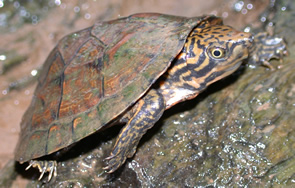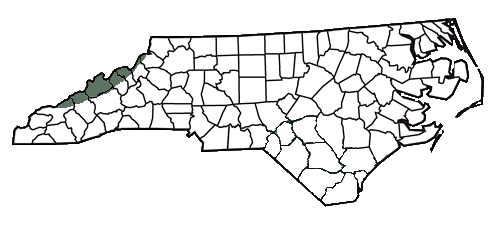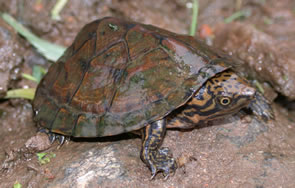
Stripeneck Musk Turtle
Sternotherus minor
Description: The stripeneck musk turtle’s most distinguishing feature are the numerous dark stripes lining the head and neck. The carapace is keeled, and is either gray or brown. Sometimes the carapace will have dark streaks or spots. The small plastron is yellowish and unspotted, and has only one inconspicuous hinge. Two fleshy appendages known as barbels can be found on the chin. Adults range from 3 to 4.5 inches (7.5-10 cm) in carapace length.
Feeding/Diet: This species is omnivorous, but it prefers small snails and aquatic insects.
Activity/Behavior: This species is diurnal and does the majority of its foraging in the morning. Little else is known about the habits of this species in North Carolina.
Habitat/Range: The stripeneck musk turtle is very aquatic and occurs in streams and rivers in the mountains.
Reproduction: Little is known about this species’ reproductive biology anywhere within its range. It is thought to lay about 7 eggs.
Miscellaneous: This turtle is listed as a Species of Special Concern by the state of North Carolina. Stripneck musk turtles have only been found in two counties in North Carolina.

The shaded region represents the range of the stripeneck musk turtle in North Carolina.



